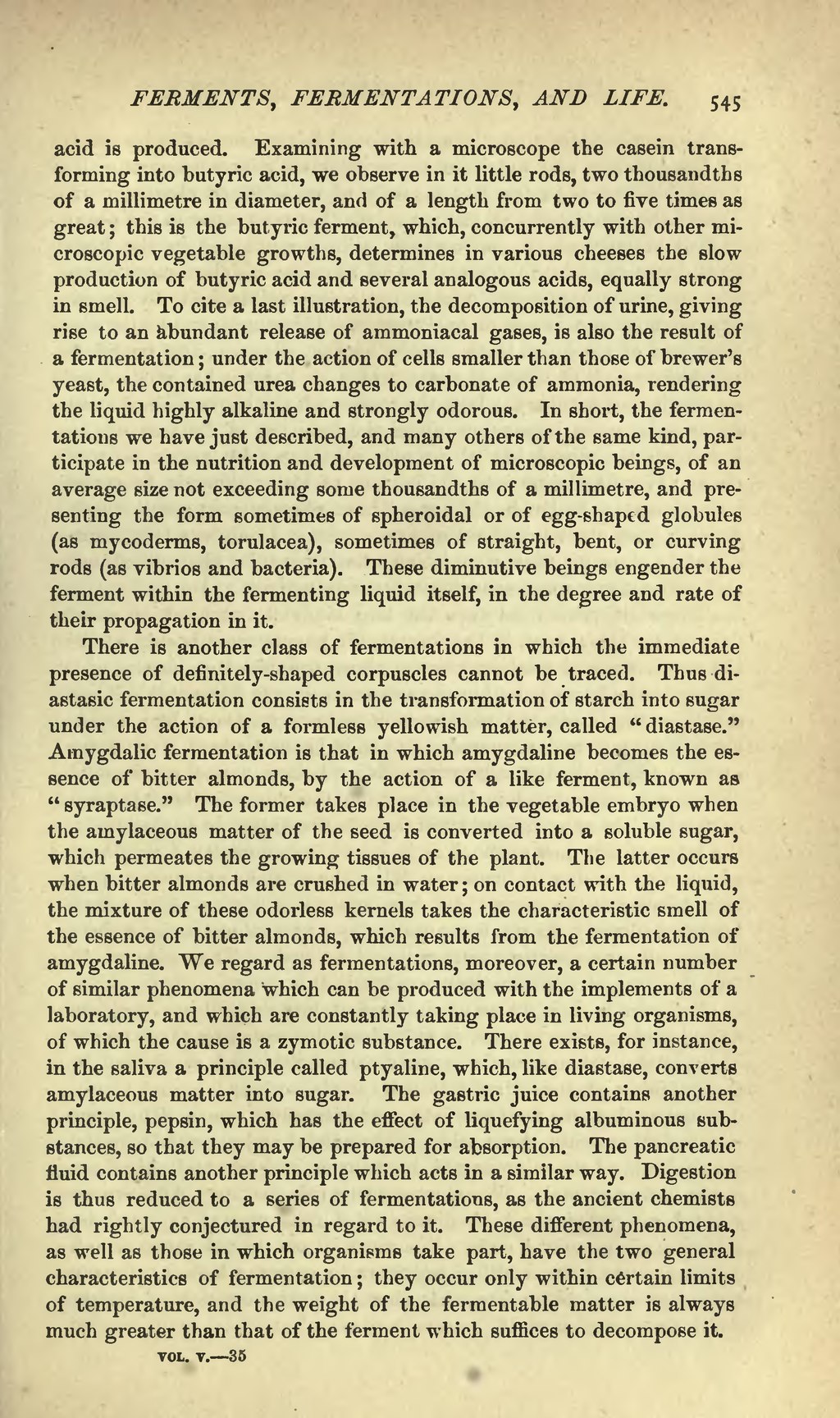acid is produced. Examining with a microscope the casein transforming into butyric acid, we observe in it little rods, two thousandths of a millimetre in diameter, and of a length from two to five times as great; this is the butyric ferment, which, concurrently with other microscopic vegetable growths, determines in various cheeses the slow production of butyric acid and several analogous acids, equally strong in smell. To cite a last illustration, the decomposition of urine, giving rise to an abundant release of ammoniacal gases, is also the result of a fermentation; under the action of cells smaller than those of brewer's yeast, the contained urea changes to carbonate of ammonia, rendering the liquid highly alkaline and strongly odorous. In short, the fermentations we have just described, and many others of the same kind, participate in the nutrition and development of microscopic beings, of an average size not exceeding some thousandths of a millimetre, and presenting the form sometimes of spheroidal or of egg-shaped globules (as mycoderms, torulacea), sometimes of straight, bent, or curving rods (as vibrios and bacteria). These diminutive beings engender the ferment within the fermenting liquid itself, in the degree and rate of their propagation in it.
There is another class of fermentations in which the immediate presence of definitely-shaped corpuscles cannot be traced. Thus diastasic fermentation consists in the transformation of starch into sugar under the action of a formless yellowish matter, called "diastase." Amygdalic fermentation is that in which amygdaline becomes the essence of bitter almonds, by the action of a like ferment, known as "syraptase." The former takes place in the vegetable embryo when the amylaceous matter of the seed is converted into a soluble sugar, which permeates the growing tissues of the plant. The latter occurs when bitter almonds are crushed in water; on contact with the liquid, the mixture of these odorless kernels takes the characteristic smell of the essence of bitter almonds, which results from the fermentation of amygdaline. We regard as fermentations, moreover, a certain number of similar phenomena which can be produced with the implements of a laboratory, and which are constantly taking place in living organisms, of which the cause is a zymotic substance. There exists, for instance, in the saliva a principle called ptyaline, which, like diastase, converts amylaceous matter into sugar. The gastric juice contains another principle, pepsin, which has the effect of liquefying albuminous substances, so that they may be prepared for absorption. The pancreatic fluid contains another principle which acts in a similar way. Digestion is thus reduced to a series of fermentations, as the ancient chemists had rightly conjectured in regard to it. These different phenomena, as well as those in which organisms take part, have the two general characteristics of fermentation; they occur only within certain limits of temperature, and the weight of the fermentable matter is always much greater than that of the ferment which suffices to decompose it.

